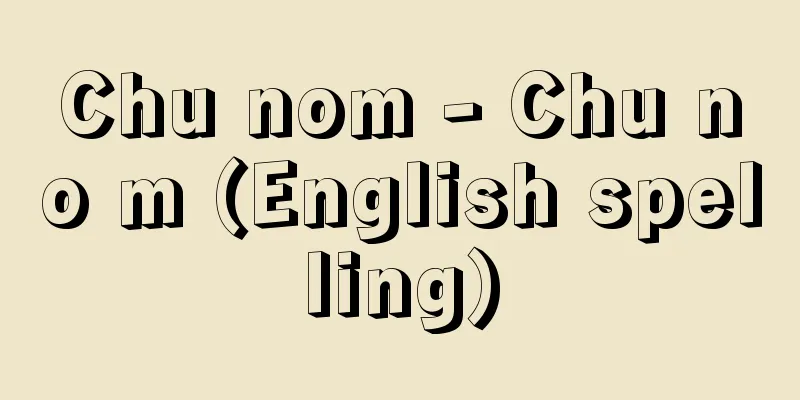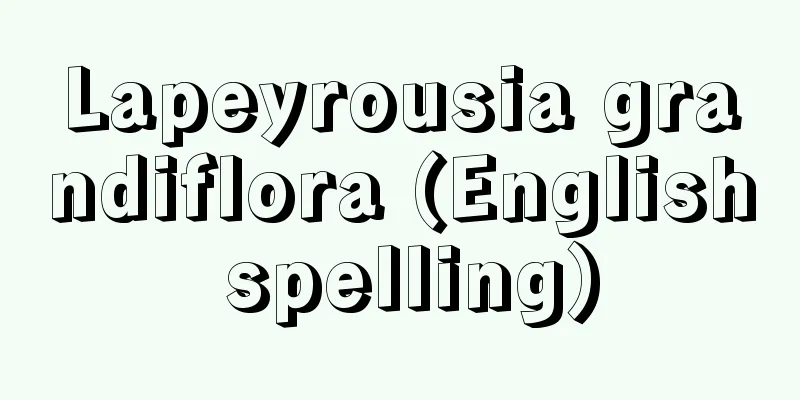Chu nom - Chu no m (English spelling)

|
The Vietnamese national script. Since ancient times, the Vietnamese have used Chinese characters as the official script, written formal documents in classical Chinese, and considered their national language to be slang, without having a written language in their national language. Eventually, however, the national script, 'Nan', which was invented as a derivative of Chinese characters, made it possible to write their national language, and gradually a writing system that mixed 'Nan' and Chinese characters came into practical use. At first, it was a convenient script for recording place names, but in the 13th century, when national consciousness was on the rise, the imperial court poetry world began to use this script to write national poetry that imitated the rules of Chinese poetry, and after that, while it was considered a slang until the 19th century, it was the only way to write literary works in the national language in contrast to Chinese poetry and records of village society. In addition to borrowed Chinese characters such as "ペーン" to represent the numeral one, it is made up of unique phono-semantic (" ) and compound ideographic (" ) characters. However, due to its deficiencies as a writing system with many variant characters and the fact that it could not be used without knowledge of Chinese characters, it fell out of use altogether along with Chinese characters with the spread of the romanization method known as national language (kuok kugu) that began in the late 19th century. [Kunie Kawamoto] [Reference] |Source: Shogakukan Encyclopedia Nipponica About Encyclopedia Nipponica Information | Legend |
|
ベトナムの民族文字。ベトナム人は古くから漢字を公の文字とし、正式の文書を漢文で書いて民族語を俗語とみなし、民族語による書きことばをもたなかったが、やがて漢字から派生的に考案した国字である喃によって民族語の表記を可能にし、しだいに喃と漢字を混交した書記法が実用されるに至った。初めは地名などを記録するための便宜的な文字であったが、13世紀の民族意識勃興(ぼっこう)期に宮廷詩壇で漢詩の規矩(きく)に倣った国語詩がこの文字によって書かれ始め、その後19世紀まで俗字とみなされながら、漢詩文に対する民族語による文学作品や、村落社会の記録を書く唯一の手段であった。「蔑」で数詞の一を表すような漢字の仮借(かしゃ)のほか、独自の形声(けいせい)(「」=ひと)や、会意(かいい)(「」=そら)の文字などからなるが、異体字が多い文字体系としての欠陥と、漢字の知識がなければ運用できないことなどのために、19世紀末に始まった国語(クオックグー)とよばれるローマ字表記法の普及によって漢字とともにまったく用いられなくなった。 [川本邦衛] [参照項目] |出典 小学館 日本大百科全書(ニッポニカ)日本大百科全書(ニッポニカ)について 情報 | 凡例 |
<<: Tuba - Chuba (English spelling) tuba
>>: Johann Heinrich von Thünen
Recommend
California [State] - California
A state on the Pacific coast of the United States....
Moles, AA (English spelling) MolesAA
...From the era of department stores in the 19th ...
Travel Guide - Ryokou Annaisho
A travel guidebook is a publication that provides ...
Citronella grass
A perennial herb of the grass family that produces...
Pneumonitis
… [Interstitial pneumonia] It refers to a group o...
FAA - Federal Aviation Administration
Federal Aviation Administration : A division of th...
Artificial radiation
…All humans are exposed to environmental radiatio...
Japan Railway Construction Corporation
The Japan Railway Construction Public Corporation...
Sore - Grass
〘Noun〙① A disease such as eczema that develops on ...
Finite decimals - finite decimals
A decimal that ends with as many digits as possibl...
Mother of the eyelids - Mother of the eyelids
A play by Hasegawa Shin. Two acts. Published in t...
Kanjo Scroll - Kanjo no Maki
A classification of Heikyoku repertoire. It refers...
Tomizawa Red and Yellow Man
Haiku poet. Born in Ehime Prefecture. Real name: ...
Banda, HK (English spelling) BandaHK
...Although the majority of the population is Ind...
Ewald's Law
… When the head moves, the endolymph in the semic...









